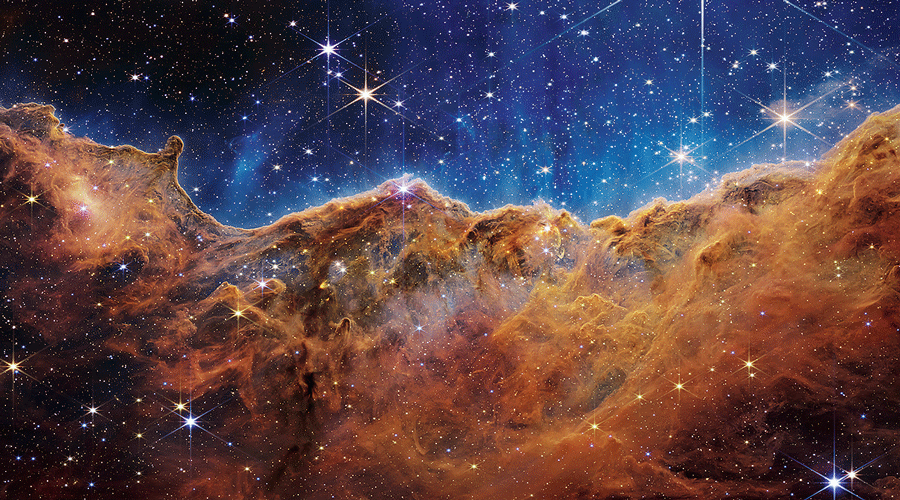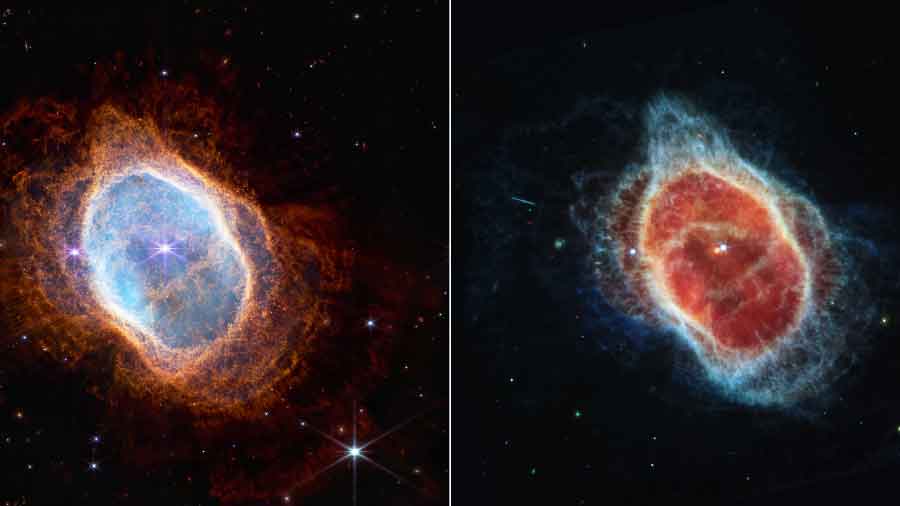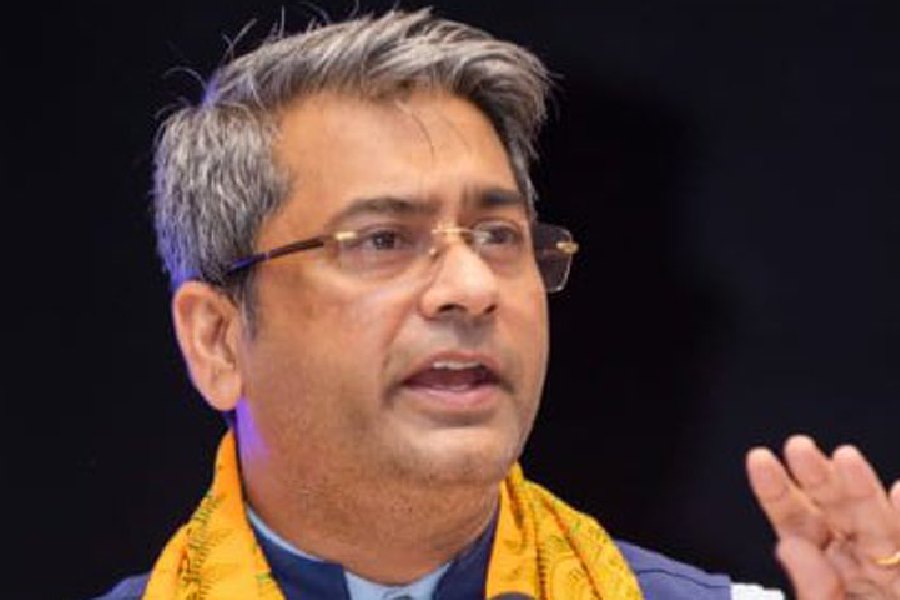Jessy Jose in Tirupati is among astronomers worldwide waiting for images from the James Webb Space Telescope. Her target is what they call the Galactic Centre Cloud where she plans to look for evidence for star birth.
Jose — one of two astronomers in India who have procured observation time on the JWST — watched on Tuesday night the first science images from the telescope released by US space agency Nasa.
The images from the JWST — the largest observatory ever placed in space — include what Nasa has described as the “steamy atmosphere” of a giant planet orbiting a distant Sun-like star, the “final performance” of a dying star, and a nearby star-forming region where dense clouds of gas, dust and stars resemble a landscape of “mountains and valleys”.
“These images are absolutely stunning in their detail. We expect lots of science to emerge from the beauty in such images,” said Jose, an astrophysicist at the Indian Institute of Science Education and Research, Tirupati.
Jose is part of a research group in the US, Britain and Australia that hopes to use the JWST to probe a region of the galactic centre that astronomers call the Galactic Centre Cloud, dense with molecular clouds and dust and long believed to be a nursery for stars.
The JWST, launched on December 25, 2021, is itself a collaborative effort by three space agencies — Nasa, the European Space Agency and the Canadian Space Agency —and is designed to provide deeper and sharper images of the universe than ever before.
The telescope peers into the universe using instruments that pick up infrared emissions — thus allowing it to see through thick clouds of dust, and enabling astronomers to get images that no existing telescope on Earth or space has delivered.
One of the images Nasa released on Tuesday showed the atmosphere of a planet orbiting a star about 1,150 light years away. The JWST has captured the distinct signature of water, along with evidence of clouds and haze in the atmosphere surrounding the hot planet called Wasp-96b.
Another image revealed in unprecedented detail what astronomers call the Southern Ring planetary nebula, shells of gas and dust ejected by a dying star around 2,500 light years away. The JWST has revealed for the first time that the star is cloaked in dust.
The telescope will allow astronomers to dig into such clouds of gas and dust expelled by dying stars. Understanding which molecules are present and where they lie in the shells of gas and dust will help astronomers refine their knowledge of these objects.
“We have a broad understanding of star birth. Now, we hope to probe details not accessible until now,” said Manoj Puravankara, an astronomer at the Tata Institute of Fundamental Research, Mumbai, the second astronomer in India with observation time on the JWST.
Puravankara and his colleagues in other countries will use the telescope to study four embryonic stars -- stars in the earliest stages of formation — ranging in masses from one-tenth to 12 times the mass of the Sun.
The release of the JWST images kicks off the start of the telescope’s science operations. Astronomers around the world will get a chance to use the telescope to observe anything from objects within the solar system to the most distant objects in the early universe.
Nasa administrator Bill Nelson said in a statement: “These images, including the deepest infrared view of the universe that has ever been taken, show us how Webb will help uncover the answers to questions we don’t even yet know to ask — questions that will help us better understand our universe and humanity’s place within it.”












